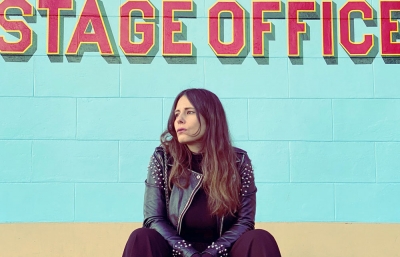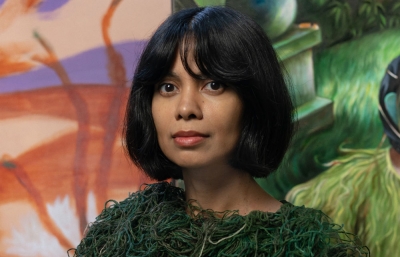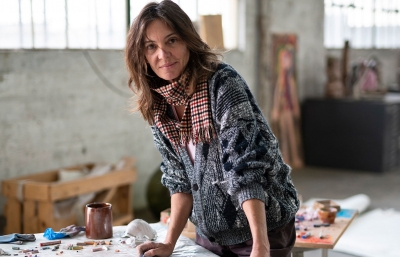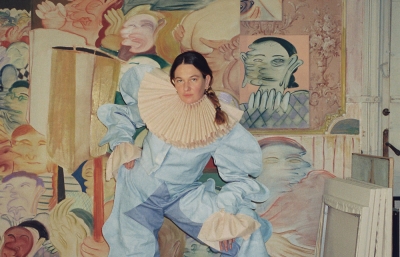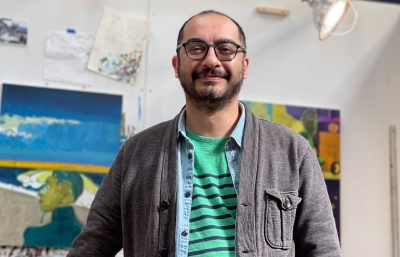
Dan Lam
Doing The Most
Interview by Kristin Farr // Portrait by Shayna Fontana
What do Brazilian butt lifts, deep sea creatures, and polyurethane foam have in common? They all occupy the mind of Dan Lam, an artist living in Texas, whose blobby sculptures recently went viral and broke the internet. Her drippy creations feel organic, despite being made with a parfait of synthetic materials, and while the juxtaposition of beauty and decay is clear on the surface, Lam’s process and intentions invite a deeper perspective on body politics and the cultural implications of humans judging each other. She approaches aesthetics through many different lenses, resulting in an entrancing candy store of unidentifiable new forms.
Kristin Farr: What’s the most memorable thing your work has been compared to?
Dan Lam: People are very surprised by them, so there’s never really a direct correlation to anything, but the best comparisons I get are otherworldly, like aliens or sea creatures, which is interesting because they both have the element of the unknown.
Your process seems to involve a lot of risk and spontaneity. How are the sculptures made?
All of my sculptures start with an understructure, like recycled foam material or something used to build up volume. I pour polyurethane foam over that structure, and there’s a chemical reaction for a two or three-minute span of time that I have to work with. As I pour, it’s reacting and starts to inflate, so it’s really about timing and letting gravity do its thing; not working against it, but with it. It cures in a couple hours, and then I pour an acrylic-paint base over the whole thing. After that, I’ll do the spikes with cake piping tools. Sometimes I put resin on it, and lately I’ve been using thermochromic paint with an airbrush.
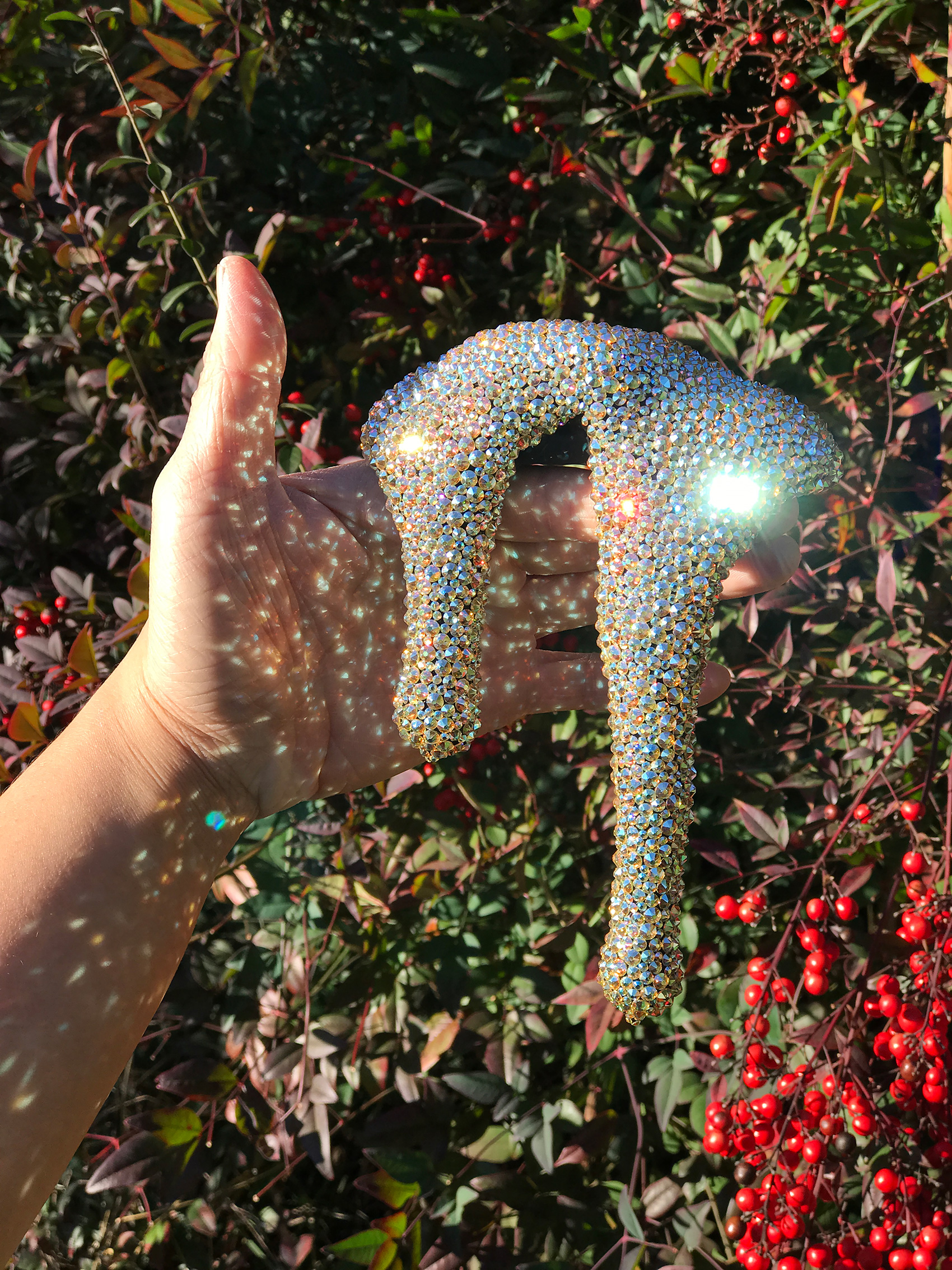
How did you start using the foam as your primary material?
In undergrad, I was really interested in texture. I was a painting and drawing major, and became interested in leaving the canvas. I’m really attracted to soft sculpture and droopy, melty aesthetics, so I was experimenting with a lot of materials like hot glue. I started using resin and plaster. All my materials have been geared towards finding that drippy look, but everything I was using was insanely heavy. I did some research and looked at Lynda Benglis’s work, and it clicked when I saw that she used polyurethane foam. I started playing with it, and it did exactly what I wanted. It’s functional because it has the look that I want and the ideas that I like, and it allows me to make them big and voluptuous without being heavy.
You mentioned melty aesthetics, so I wondered if you get a lot of questions about psychedelic connections, even though your work is more about nature and physicality.
I do. I can see it, but it’s not what inspires me in a direct way, because you’re right, nature is more of my direct inspiration. Psychedelics have definitely influenced my life, and what I like about my work is that people see so many different things. Along with the idea of it being so foreign, that psychedelic realm is interesting because it’s also an unknown, a world we don’t fully understand. I do get those questions a lot, but it has to do with the someone’s filter and their own life experience. If they’ve done a lot of drugs, they might say the sculptures look like something you’d want to see while on shrooms.
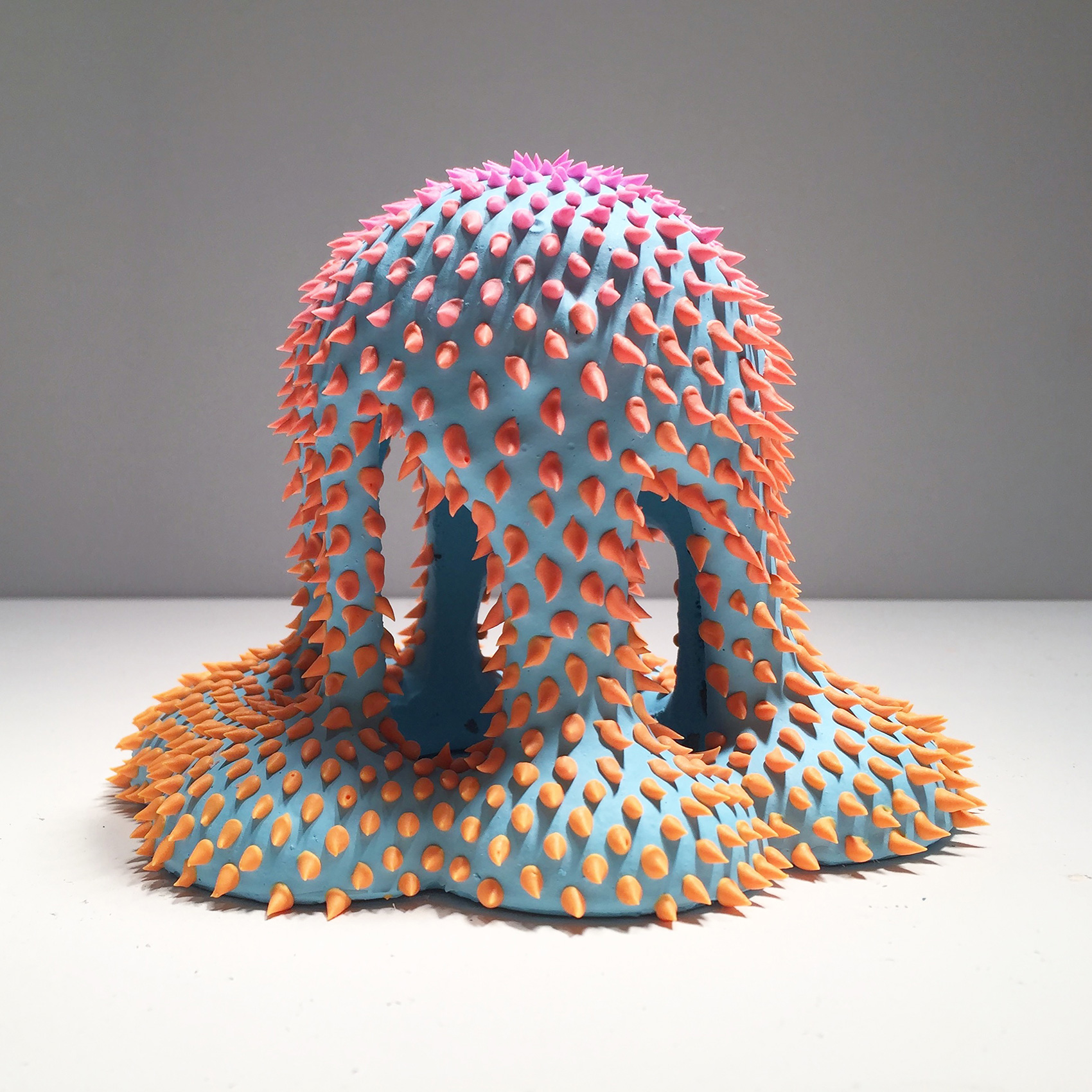
You don’t need shrooms. They’re already breathing. Just looking at them makes you feel like you’re on drugs.
I’ve heard that comment too! I want them to have that illusion of being alive, but you don’t need drugs to see it.
Tell me about how your work hints at excess and desire. The Drips covered in Swarovski crystals speak to that intention.
These pieces live between the worlds of the beautiful and the ugly, and as I push that idea further, the idea of excess has become really interesting. Covering a piece in Swarovski crystals is decadent; it’s over the top. I relate the crystals to things used in pageantry, like dresses and bikinis covered in crystals. It’s meant to draw attention and make something more eye-catching. Putting crystals on a form that is somewhat grotesque pushes it over the top. There’s this feeling of an over-pouring, the cup-runneth-over idea.
Even without crystals, the idea of excess is there, because you cover the sculptures so completely.
That’s what resin does for me, too. That goopiness, along with glitter, shimmer, and pearls, are all iterations of the same idea.
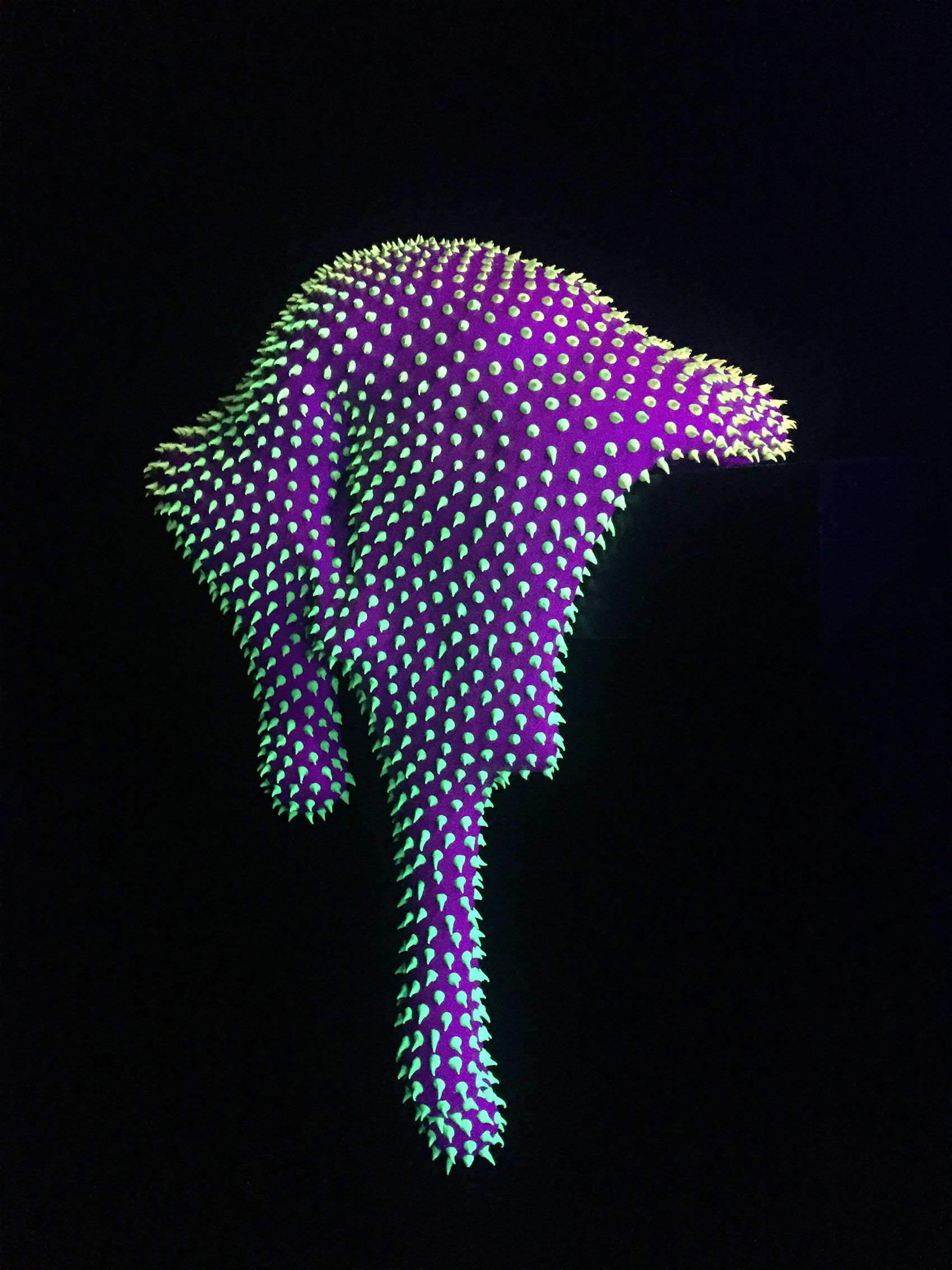
The work relates to body image much more than I realized at first. I noticed when I saw the sculpture called Thigh Gap.
Part of what attracts me to the polyurethane material is that it reminds me of the body. The raw material is kind of an ugly, tan skin color with all these imperfections like pockmarks from little bubbles—it even has what looks like cellulite. It’s very fatty. I’m attracted to that aesthetic, but I also find it kind of gross, so it already embodies this idea. I cover up a lot of those imperfections, so it’s related to how we put clothes on to enhance our form or distract from it. From makeup, to how we do our hair, there are things we adorn ourselves with to make our natural form better or more hidden.
The drips with thermochromic paint create a surface like a mood ring, which is another connection to the body because the color changes with touch or warmth.
The most consistent reaction to my work is, “I want to touch it,” so that poses an interesting relationship between the viewer and the art, and it even contributes to the idea that they’re alive. I’ve been thinking about what it means when someone sees something, and they want to understand it with more than just their eyes. Thermochromic paint is heat sensitive, so when someone touches it, it reacts to them. It’s unexpected because, in the art world, you’re not supposed to touch things. If there are enough bodies in the room, the painted surface will warm up enough to change colors, so even without touching, you can still interact. I’m tempting the viewer in a more direct way with the thermochromic pieces. I don’t know if it alleviates the curiosity, or if it creates even more, and I like that tension of wanting to touch but not being able to.
I learned the word for the ability animals have to change color, aposematism, from reading about your work. Are there other fun facts from nature that have inspired you?
Warning colors in nature are definitely something I’ve looked at—those really bright warning colors that animals or bugs give off to deter predators. Although I try not to directly reference nature, I go on hikes, and I love looking at canyons and rivers, and seeing how the Earth has formed or eroded. There’s a give-and-take, and materials interacting and changing, and I take those ideas into the studio, especially when I’m doing my pours. I can guide the process, but there are other factors at play—the temperature of the room, gravity and time also contribute to the process, so nature inspires that balance. I know when I can control something and when I have to let go.
As far as colors, I look at coral and all the weird things that you wouldn’t think could happen in nature, like how certain reptiles have a holographic sheen to them. I went to Denver recently and hiked in the mountains where we saw this river with specks of mica or fool’s gold in it; then I realized the water itself had shimmer, tiny specks of iridescence, and I see that same thing when I’m mixing resin and adding some pearlescent interference to it. There’s also coral that’s UV light reactive, and there are deep sea creatures with bizarre patterns. I look at this stuff a lot, and then I just let it sit for a while in my brain, and sometimes it comes out in the work.
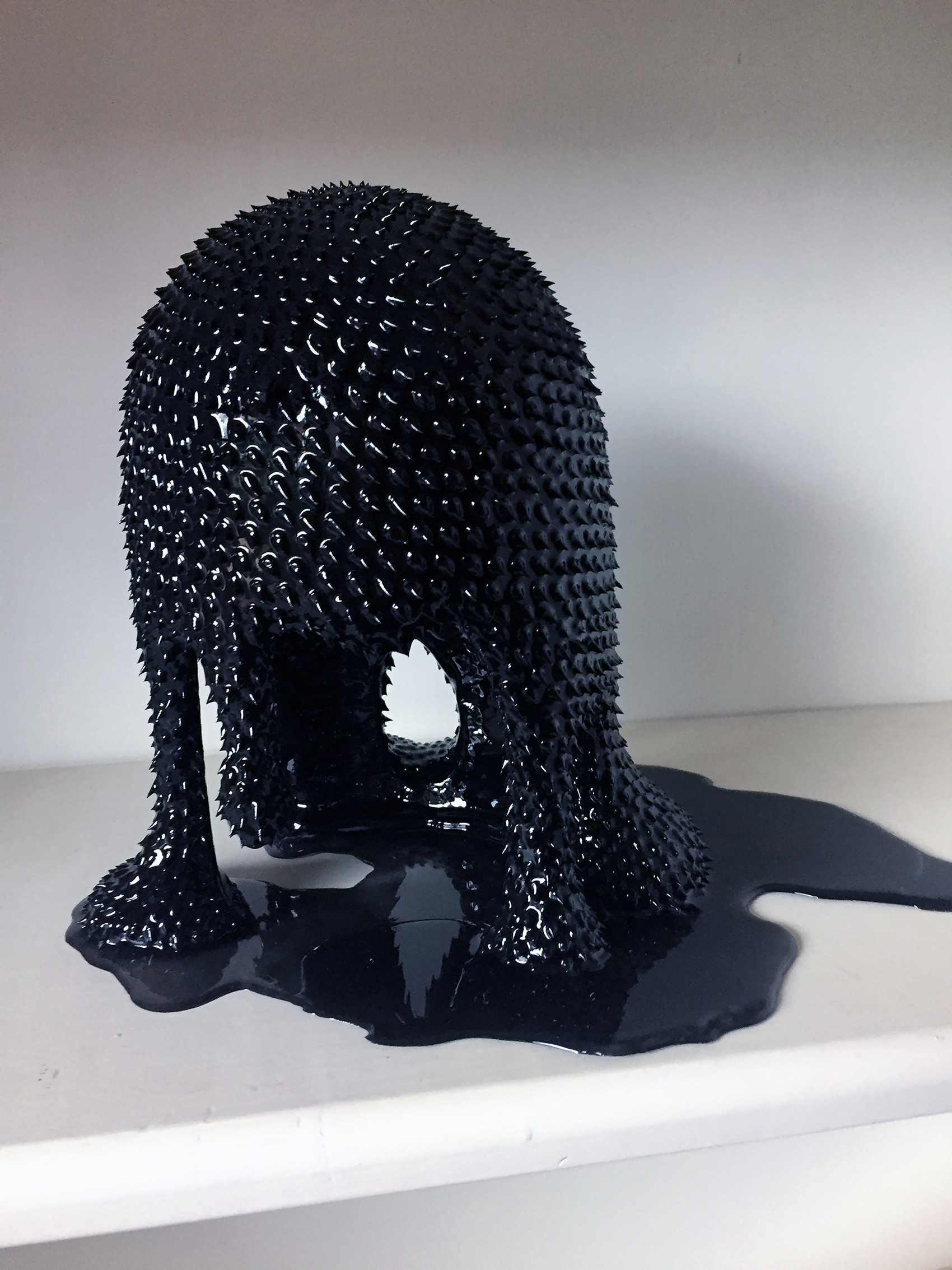
How does color theory come into play?
I taught color theory in grad school and it was wonderful. Teaching is fun because you have to understand something fully or in a different way in order to explain it to someone else. It surprised me, after I graduated, that color theory kept coming back to me, in terms of looking at Joseph Albers and color interactions. It helps when I’m doing gradients, which give the illusion of movement, and I’m interested in vibrating colors and how color sits on a surface, and what it does to our eyes, like the movement created with hot pink on top of hot green, for example. There’s just so much information in color. If it’s a primary interest for you, then there are so many iterations you can try. It’s infinitely interesting.
What are your comfort colors?
I really like neons. My most comfortable palette is probably what most people associate with my classic drips; a light blue base with pink and orange spikes. I relate a lot to the colors of the sky and sunset.
How do you categorize your three types of sculptures?
Blobs are anything that goes on the wall, these rotund, rounded forms. Squishes are the freestanding sculptures, they’re my newest thing. And the drips hang over shelves or pedestals.
What kind of work did you make in undergrad?
I was always interested in abstract forms, and obviously the Surrealists were big for me when I was young. Early on, I was painting with watercolor, letting it flow, and finding forms within the abstraction. I remember learning about the Impressionists in art history class, and it really stood out to me that, during their time, they were considered bad painters because people thought they didn’t have control of their medium, but really they were just letting the paint be itself. They were letting the paint show, versus creating illusion, and that made so much sense to me. I started playing with paint as a material, and then got into building up texture, and my interest in abstraction is where it all started.
How did your MFA program help you grow, and how did your work change after you finished?
My MFA was pretty crucial in the development of my ideas. Professors come to your studio, and the dialogue is what really helped, just being with people who questioned my work challenged me in a conceptual way. I was in the painting program, but I was basically making wall sculptures, and I had a professor I didn’t really get along with who looked at them and said, “So, these are really beautiful, but so what?” I knew there was content there, but he couldn’t see past the prettiness, so I started relating this work to the body and even my own personal experience as a female, and how I interact with other people. When you see a person who is insanely beautiful, you almost instinctively won’t think they’re also super smart, which is a kind of social conditioning. So those types of moments, where someone asked, “What else?” really helped push me.
What materials have you been experimenting with most recently?
I’m playing a lot with silicone right now, which is another material that relates to the body, especially skin.
Oh right, you just posted a video of a rubbery scalp-type of thing. Speaking of your IG account, you really blew up last year. Any highlights?
It happened very fast. After I graduated, I moved to Midland, Texas with my boyfriend, and I used that year as a kind of self-imposed residency. I felt like I was in the middle of nowhere, with no culture around me, so Instagram was a good way to connect with other artists and build my own little cultural oasis.
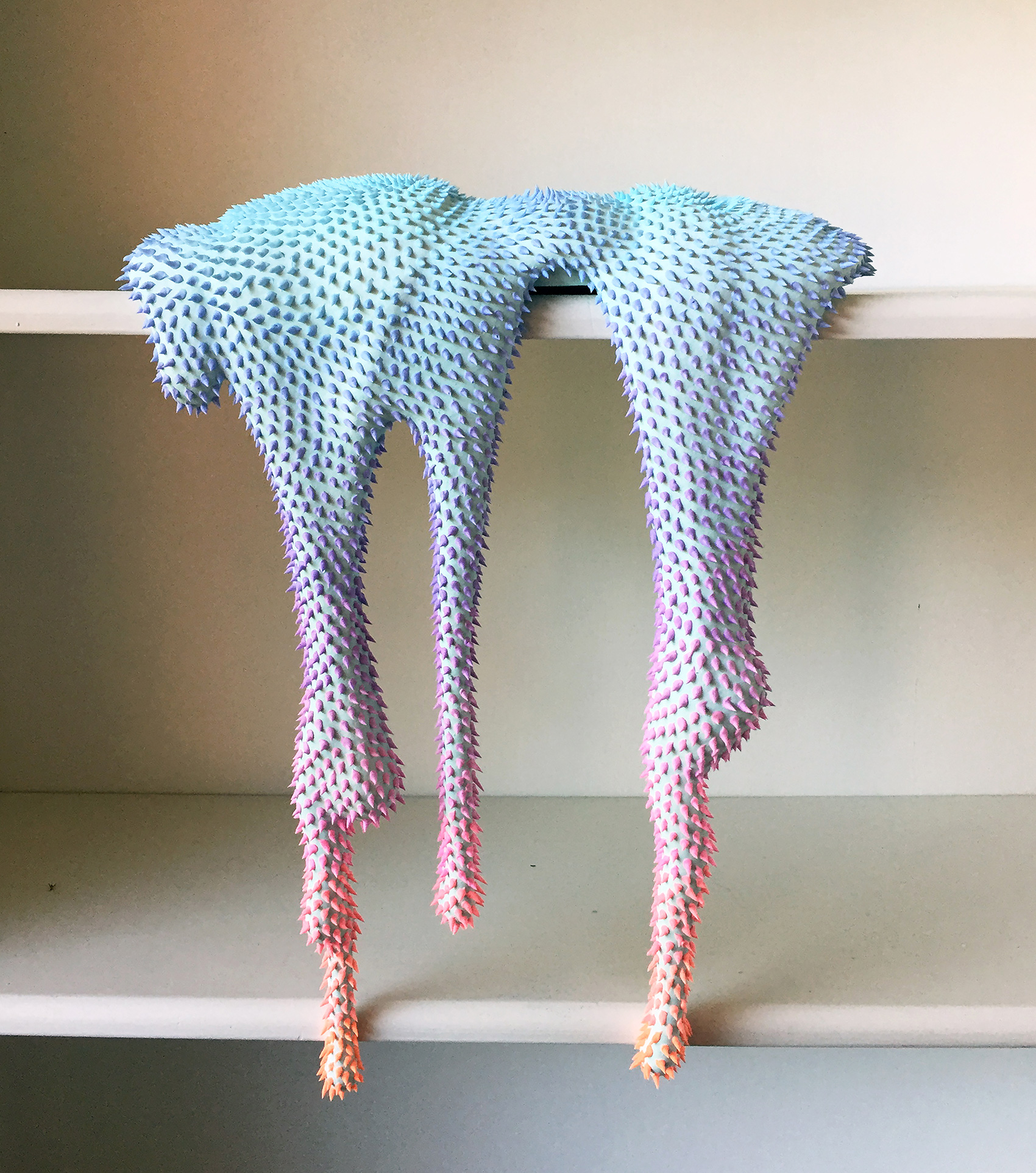
At the end of 2015, right when I moved to Dallas, you guys shared my wall pieces on the Juxtapoz site, and then other sites reblogged, and I started gaining followers. I had also connected with REVOK, and he suggested my work to a gallery in Dallas, which was really crazy. Then Miley Cyrus reached out, and it was cool, just like chatting with another artist. And then I got to show my work at Art Basel in Miami, which had been my goal for a while. Plus, I had a solo show, and I did an interview with the local NPR station that went national, and it was all very surreal. It’s weird getting used to meeting people who already know about my work. My friend was recently in Tokyo, and he has one of my sculptures tattooed on him, and another guy from the UK said, “Is that a Dan Lam?” It’s crazy that someone knew my work and was talking about it on the other side of the world.
What’s the meaning behind your IG name, @sopopomo?
I made my account while in grad school where they often asked where we saw ourselves in the scope of art history. I didn’t know how to answer that, so sopopomo stands for so post-post-modern—whatever that happens to mean in the future.
You grew up as an only child, which often leads to creativity for entertainment. Do you remember anything you made that stands out?
All that time alone as a kid helped prepare me to be an adult spending a lot of time alone making stuff. It’s very natural to me. I made a lot of crafty things, like I would melt candles and make things out of wax, and I drew a lot. My mom has the artistic gene, and she would draw my portrait every year. I would build things like box fortresses and live in them. I think sculpture comes more naturally to me, which is ironic because both of my degrees are in drawing and painting. I would watch a lot of TV and just keep my hands busy.
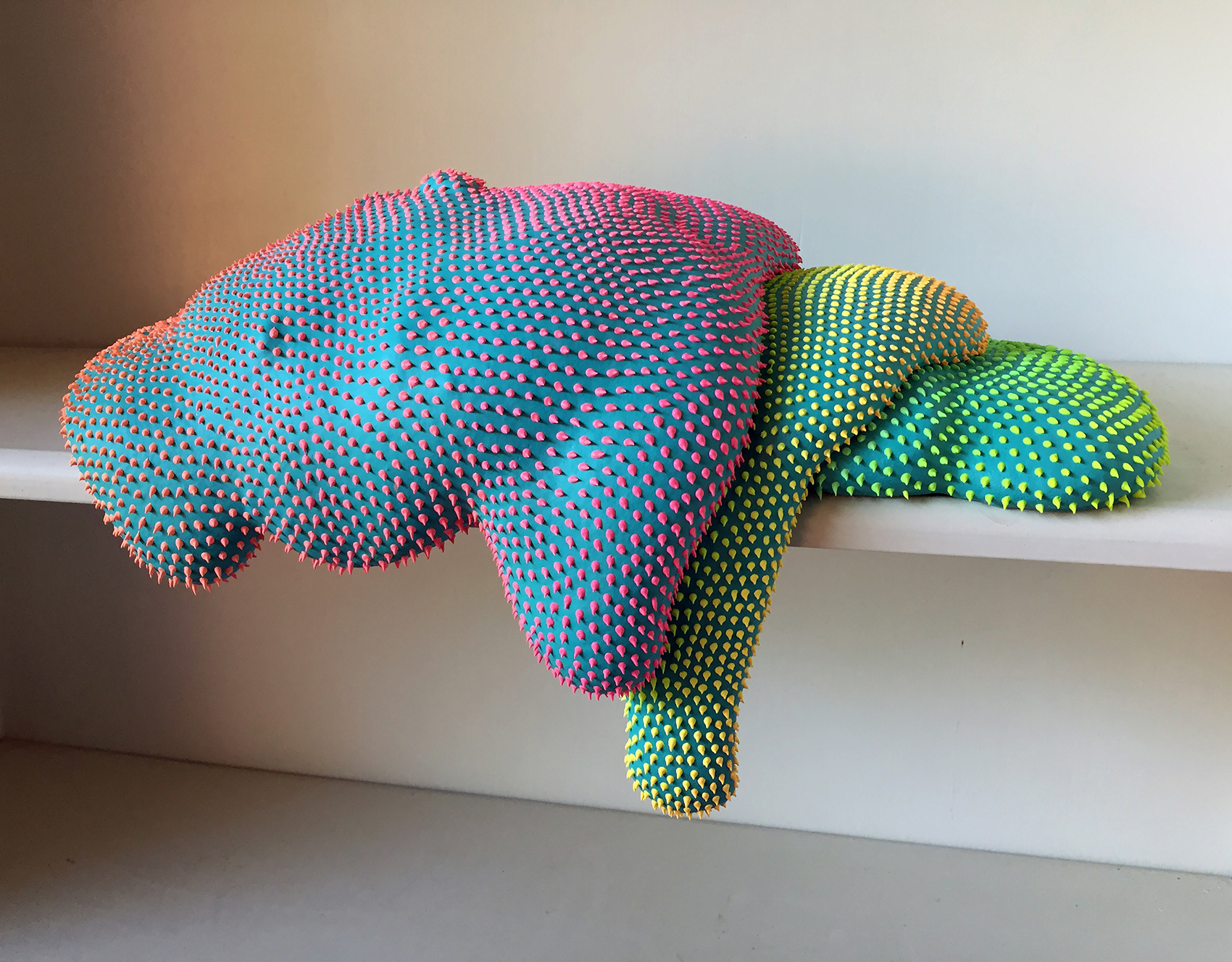
What kind of pop culture stuff are you into?
I definitely involve myself with the Kardashians as an outsider. I don’t watch the show, but I like to observe, and Instagram is a big source for that. I also look at this website called “Skinny vs. Curvy,” which informs what I do in an indirect way. Plastic surgery is huge for me, like the changing of our bodies in synthetic ways—I look at a lot of that stuff.
I watch a lot of Netflix when I’m doing the spikes on the sculptures. It’s nice to zone out and listen to stuff in the background, which relates back to childhood, having TV on as background noise and making things. I also listen to a lot of hip hop in the studio, and there’s a connection there because a lot of the songs are about women and their bodies.
I just looked up Skinny vs. Curvy. It’s untouched photos of celebrities who look both good and bad.
My favorite thing is the comments. When someone is plus size, there’s a certain reaction, and if they’re extremely skinny, people are quick to say they’re unhealthy. Lots of comments about veganism, paleo diets, and plastic surgery, especially when it comes to Kylie Jenner or Kim Kardashian.
I don’t post photos of myself very often on Instagram, but I recently did this video of gallium in my hand, that silvery material that looks like mercury. That video went viral, and some of the comments said, “Why are your hands so ugly?” I’m an artist and I make stuff, and when I post content that goes viral, the audience is much wider than an art audience, so I get comments about how my hands are dry and I need lotion. Even my hands got criticized, so I can understand why celebrities get liposuction or other procedures. It’s like a self-feeding culture on Instagram where you put yourself out there, and the reaction affects your self-esteem and makes you want to work on yourself and get things done to your face.
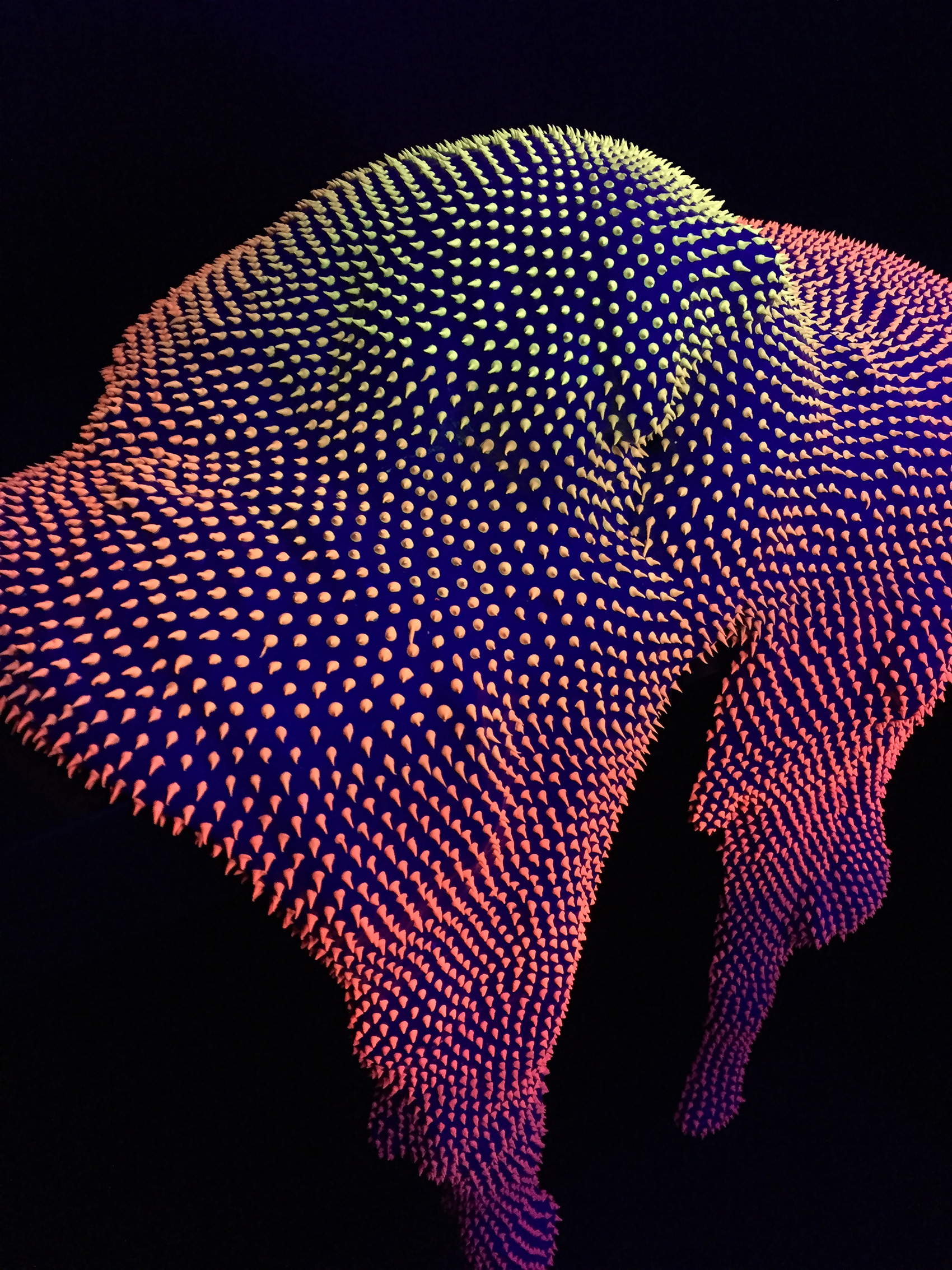
Photoshop is another element to the whole fantasy that’s created on Instagram where people don’t look real anymore. The images on Skinny vs. Curvy allow you to see the realness of things. There’s almost a schism right now between complete body acceptance and total plastic.
Right. More plastic, but also more advertising targeted at “real” body types.
The hottest plastic surgery right now is the Brazilian butt lift. I think it’s going to be the next boob job. They suck the fat out of your torso to make a skinny, more hourglass waist, and then they take that fat and put it in your hips and butt. People’s shapes are literally changing. The before and after is insane. They can even do liposuction to your abs to make it look like you have a six-pack.
How is this stuff going to age over time?
I’m curious too. I’m watching.
Last question: What is the fantasy flavor you wish your sculptures could have?
Whipped cream or cake, with crazy textures like pop rocks, or even those magic berries that make a weird coating in your mouth, and everything you eat after that tastes like the opposite flavor, like something bitter will taste sweet. It messes with your tastebuds, and in a fantasy world, I would love for my work to do that.
*
Dan Lam’s solo show at Spoke Art in San Francisco opens in October.
bydanlam.com

